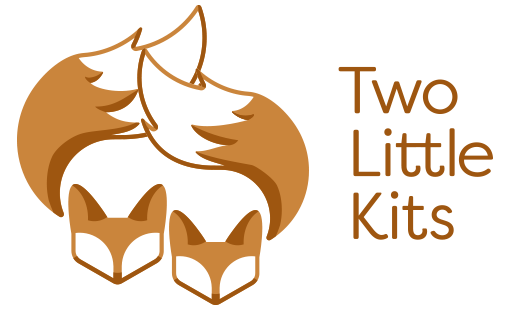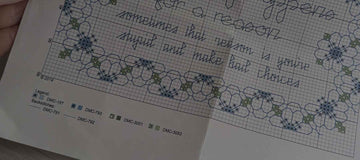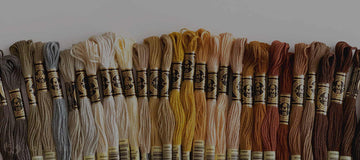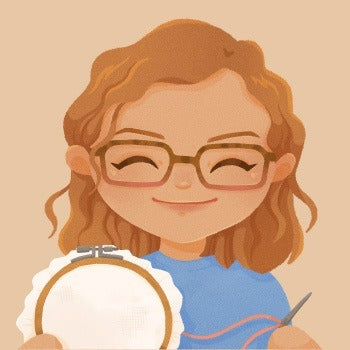Cross-Stitch Symbols & Legend and What They Mean: A Beginner's Guide
If you're new to cross-stitching, the sight of a pattern filled with tiny symbols and numbers might seem daunting. These cross-stitch symbols aren't intended to be scary — they are key to bringing your project to life, as they represent different colours of thread and even various stitch techniques.
Understanding these symbols and how to read the pattern’s legend is the first step to successful stitching.
In this beginner’s guide, I’ll break down the basics of cross-stitch symbols, explain how to read the legend or key to match symbols with colours, and provide tips for interpreting your pattern confidently. Whether you’re just starting or looking to improve your skills, this guide will help you stitch with confidence and ease.

What Are Cross-Stitch Symbols?
Cross-stitch symbols are visual cues on a pattern chart that represent different colours of thread (usually referred to as floss). Each symbol corresponds to a specific colour and sometimes indicates a particular stitch technique, such as backstitch or French knots. These symbols help guide you in stitching your design accurately without confusion.
Why Are Cross-Stitch Symbols Important?
Understanding cross-stitch symbols is crucial because they provide a clear, organized way to interpret a pattern. With so many colours and stitches, symbols act as a guide, ensuring that your final piece matches the design intended by the pattern creator. Misinterpreting a symbol can lead to mistakes that alter the appearance of your project. We don't want that!

Common Cross-Stitch Symbols and Their Meanings
Let's dive into some common cross-stitch symbols you'll encounter and what they mean:
-

X or a full, coloured square or a specific symbol: (Cross-Stitch)
The most basic and universal symbol, “X” indicates a full cross-stitch. This stitch is made by creating an “X” shape on the fabric using a needle and floss. It's the foundation of almost all cross-stitch projects.
-

/ or \ : (Half-Stitch)
These slanted lines or represent half-stitches, often used to create softer edges or shading in designs. A “/” is a stitch that goes from the bottom left to the top right, while “\” goes from the bottom right to the top left.
-

--- : (Backstitch)
This dotted or solid line represents a backstitch, which is often used for outlining designs or adding fine details like text. It involves stitching backward, creating a continuous line.
Newer patterns by Two Little Kits' can show a line with dots on the ends of them. This indicates where those lines start and end.
-

• : (French Knot)
This tiny dot symbol indicates a French knot, a decorative stitch used for eyes, flowers, or any small detail that needs a raised, textured look.
-

¼ and ¾ Symbols: (Fractional Stitches)
These symbols represent quarter and three-quarter stitches, used when a pattern requires more precision in curves or intricate details. These stitches are made by crossing just a part of the square, making them perfect for rounding out shapes.
Most often, you will be stitching a ¾ stitch, which is shown on a pattern as a triangle. The way the triangle faces determines the position of your ¾ stitch. -

Multi-Coloured Boxes w/ Symbols: (Blended Floss)
Sometimes, patterns use multi-coloured boxes with symbols inside them. These symbols may indicate using two (or more) different floss colours blended together, providing unique shading effects.
A pattern with this designed by Two Little Kits will indicate the blended floss colours within the legend.
How to Read & Use Cross-Stitch Symbols on a Pattern Chart
-
Check the Legend:
Every cross-stitch pattern includes a legend or key, sometimes found at the side or bottom of the chart, often as a separate sheet. This legend matches each symbol with its corresponding floss colour number. The legend is your go-to reference for decoding the symbols.
-
Use a Highlighter or Pencil:
Highlighting or marking off the stitches you've completed can help you track your progress. It's especially helpful on complex patterns with many colour changes.
-
Look Out for Repeated Symbols:
Some symbols can look similar (like small dots or lines), so double-check that you are using the correct floss colour. If two similar symbols are side by side, make sure you clearly differentiate between them in your stitching.
Patterns designed by me at Two Little Kits are thoroughly reviewed so as the symbols are not confusing or complicated to decipher.
Tips for Beginners to Master Cross-Stitch Symbols
-
Start Simple: Choose beginner-friendly patterns with fewer symbols to familiarize yourself with reading charts. Look for designs that use full cross-stitches before advancing to more complex stitches like French knots or fractional stitches.
-
Organize Your Floss: To make your stitching more efficient, pre-organize your floss according to the symbols on your chart. Use floss cards or organizers that allow you to label each colour with its corresponding symbol.
-
Use a Good Light Source: Proper lighting will help you see the symbols clearly on your pattern, reducing the risk of errors. Invest in a daylight lamp or magnifier if you often stitch in low-light conditions.
-
Keep the Legend Nearby: Always keep the legend visible while stitching, and don't hesitate to refer back to it often. Many beginners find it helpful to tape a small copy of the legend onto their workspace.
Troubleshooting Common Cross-Stitch Symbol Issues
-
Misreading Symbols: It's easy to mistake symbols, especially if they look alike. Take your time and double-check frequently. Using a needle minder or small magnets to keep your place on the chart can be a big help.
-
Colour Bleeding: Sometimes, symbols that are close together can make colours bleed into each other visually on the chart. If you notice this happening, try using highlighters to differentiate between the stitches you've already completed.
-
Confusion with Blended Floss: When using two different colours in one stitch, it's important to match the floss strands carefully. Make sure to double-check the symbol against the legend to avoid incorrect colour blending.

Understanding the Legend of a Cross-Stitch Pattern
One of the most important parts of any cross-stitch pattern is the legend, also known as the key. The legend acts as a decoder, matching each symbol on the chart to its corresponding floss colour and often providing additional information like stitch types or thread blends. As a beginner, learning to read the legend is essential to accurately translate the chart into a beautiful stitched piece.
How to Read the Legend of a Cross-Stitch Pattern
The legend is typically found on the side or bottom of the pattern chart. It’s usually organized in a table format, with each row containing a symbol, the corresponding floss colour number (often from a brand like DMC), and sometimes the name of the colour (e.g., “310 - Black”). Here's a quick breakdown of how to read and use the legend effectively:

-
Match Symbols to colours: Each symbol on your chart corresponds to a specific floss colour in the legend. Before you start stitching, take time to familiarize yourself with the symbols and their associated colours. This will help prevent mistakes and ensure you’re using the right thread for each part of your design.
-
Check for Blended Threads or Special Stitches: Some patterns include blended floss, where two strands of different colours are used together. The legend will indicate this with a specific symbol and a note about which colours to blend. It might also include information about special stitches like French knots or backstitching, specifying the exact floss colour to use.
-
Organize Your Floss by the Legend: To make stitching easier, consider setting up your floss in the order it appears in the legend. You can use floss cards, plastic bobbins, or thread organizers and label each section with the corresponding symbol from the legend. This will speed up your stitching and help you stay organized.
Understanding and using the legend effectively is key to accurately following a cross-stitch pattern. By taking the time to read and refer to the legend frequently, you’ll ensure each symbol is correctly matched to its colour, allowing your project to turn out exactly as intended.
Why Learning Cross-Stitch Symbols is Worth It
Learning to read cross-stitch symbols may seem like an overwhelming part of starting your stitching journey, but it's incredibly rewarding - and important. Once you become familiar with these symbols, you'll be able to tackle any pattern with confidence, from simple beginner designs to complex and intricate works of art. Mastering symbols and the legend is the key to turning a chart into a beautifully finished piece, making every stitch count.
Conclusion: Cross-Stitch Symbols Made Simple
Cross-stitching is a relaxing and fulfilling craft, and understanding cross-stitch symbols is a vital part of this creative process. By familiarizing yourself with the most common symbols and their meanings, you're setting yourself up for success. So grab your needle, thread your floss, and let those symbols guide you to a beautiful finished piece!







